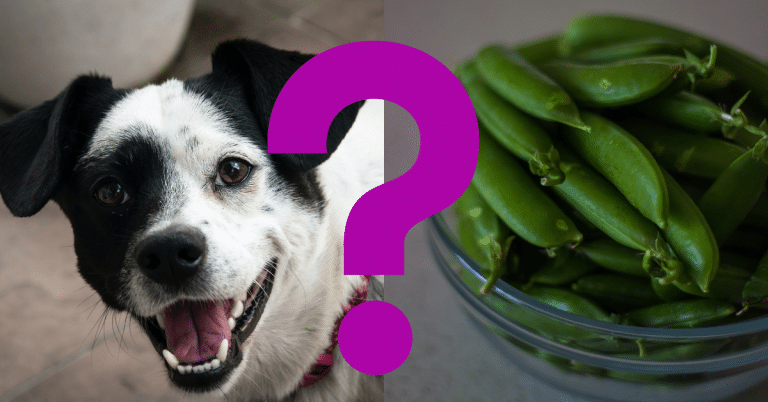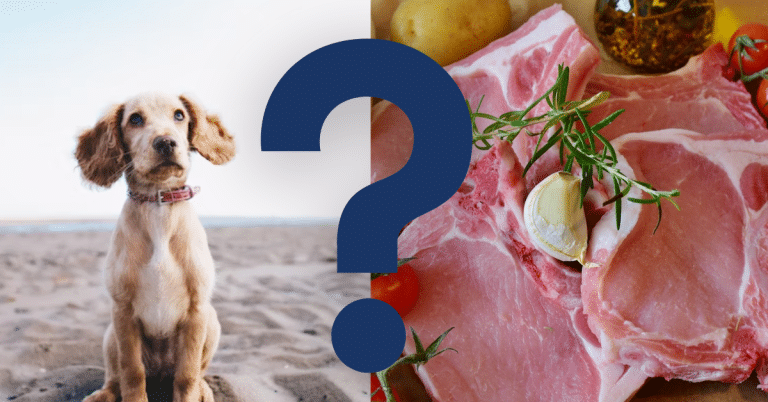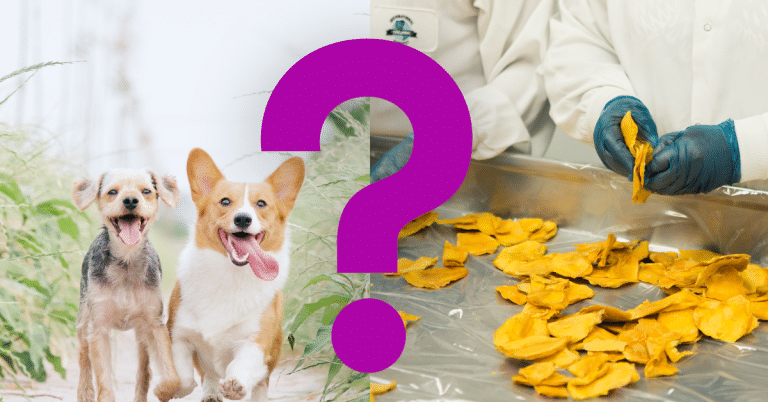Can Dogs Eat Pesto? A Vet’s summary

Pesto sauce contains garlic, basil, pine nuts and olive oils, but can dogs eat pesto
In moderation, dogs may consume pesto, but it’s crucial to pay attention to the components in the pesto. Basil, garlic, pine nuts, olive oil, and Parmesan cheese make up traditional pesto sauce. When consumed in excessive numbers or under specific circumstances, several of these chemicals can be dangerous to dogs.
Let’s dive in:
Benefits Of Pesto For Dogs
As previously indicated in the previous comments, some of the elements in pesto, a classic Italian sauce made mostly from basil, pine nuts, olive oil, and occasionally cheese, are thought to be potentially dangerous to dogs. However, there are a few possible advantages for dogs if you make a customized version of pesto using dog-friendly ingredients:
- Basil: Basil may provide some health advantages for dogs when consumed in modest doses. Antioxidants and vital nutrients are present, which can help to promote their general health.
- Olive Oil: Olive oil may have some health advantages for dogs when used sparingly. It is a source of monounsaturated fats, which can help dogs have healthy skin and fur.
- Pine Nuts: Pine nuts are heavy in fat and can cause digestive problems or pancreatitis even though they are not harmful to dogs. They could offer some extra calories and nutrients when consumed in moderation.
- Garlic And Cheese: As was already said, dogs should not eat cheese or garlic since they might be dangerous.
Given these possible advantages, it is imperative to stress that any homemade dog treats or pesto should be produced exclusively for dogs and free of dangerous elements like garlic, onions, and excessive amounts of fats and oils. Even when made into a pesto that is suitable for dogs, it should only be given sometimes as a treat and not as a regular component of their diet.
Always check with your veterinarian to be sure the components in any new food you want to feed your dog are secure and appropriate for his specific requirements. Market vendors provide a wide variety of safe and wholesome dog treats that are particularly made to satisfy the nutritional needs and palate preferences of dogs.

How To Safely Give Pesto To Dogs
Due to some of its constituents, pesto is not the best meal for dogs, but you can make a homemade pesto without potentially hazardous additives like garlic and large levels of fat to create a dog-friendly version. Here is a secure pesto recipe suitable for dogs:
Ingredients:
- (A few, roughly a handful) Fresh basil leaves
- (A little trickle) Olive oil
- Pine nuts (a little quantity)
- Grated Parmesan cheese, optional (for lactose-tolerant dogs, simply a little sprinkle)
- (To change consistency) Water
Instructions:
- To get rid of any dirt or residue, properly wash the basil leaves.
- Combine the basil leaves, a tiny bit of olive oil, and a few pine nuts in a food processor or blender. Pine nuts can be left out if you’d rather.
- The ingredients should be blended to a paste-like consistency. You may thin down the mixture if it is too thick by adding a little water.
- You can add a tiny amount of grated Parmesan cheese to the pesto if your dog is tolerant to cheese. If your dog has lactose intolerance, it is advisable to avoid this component.
- To store the pesto, transfer it to a small jar with a cover.
Serving Manners:
- Given that pesto contains a lot of fat, your dog should only receive little amounts of it as treats from time to time. It shouldn’t constitute a large component of their diet.
- To add flavour and variation to your dog’s usual diet, you may add a little bit of pesto made especially for dogs.
- As an alternative, you might freeze some pesto inside a Kong toy or a treat-dispensing toy. Your dog may like and enjoy eating this goodie.
Important Pointers
- Before adding any new food to your dog’s diet, even homemade treats like this pesto, always speak with your veterinarian.
- Garlic and other substances that are poisonous to dogs should not be used.
- After sampling the pesto, keep an eye out for any symptoms of allergies or digestive problems in your dog. Stop using the medication right once any negative side effects appear.
Although it’s great to enjoy sweets with our animal companions, keep in mind that their nutritional requirements are different from ours. It’s important to put their health and wellbeing first and to limit snacks to those that are suitable for their digestive system. Ask your veterinarian for specific guidance if you’re ever confused about what meals are secure for your dog.
Will Pesto Make A Dog Sick?
A dog may become ill with pesto, particularly if it contains components that are poisonous to dogs. The major cause for concern is the high fat level, garlic, and onion that are frequently included in traditional pesto. These compounds may be harmful to dogs for the following reasons:
- Garlic And Onions: These plants, which are members of the Allium family, contain chemicals that might harm a dog’s red blood cells. Consuming even little amounts of garlic or onion can cause hemolytic anemia, a potentially fatal illness.
- Heavy Fat Content: Dogs are not designed to consume huge amounts of fat, thus traditional pesto made with olive oil and almonds can be rather heavy in fat. Eating too much fat can cause digestive problems, such as nausea and diarrhea, as well as pancreatitis, a painful and sometimes fatal inflammation of the pancreas.
It is advised to steer clear of giving dogs conventional pesto because of these possible dangers. You may make a customized version of pesto without the dangerous components if you want to give your dog a treat. Even dog-friendly pesto should only be served in tiny portions as a treat sometimes and not as a staple of their diet.
Always keep in mind that a dog’s diet shouldn’t contain a lot of human food. The best approach to make sure your dog stays healthy and steer clear of any potential health risks related to human meals is to feed them a balanced and nutritionally complete dog food designed for their unique requirements. You must call your veterinarian right away if you think your dog may have consumed something harmful or if you are worried about their health.

A Vet’s Summary
Most doctors advise against feeding dogs’ conventional pesto, which contains garlic and other potentially dangerous substances. Onions and garlic are both known to be harmful to dogs and can cause major health problems such hemolytic anemia. Additionally, dogs may get digestive problems or pancreatitis from the high fat level of conventional pesto.
It is recommended to speak with your veterinarian before providing pesto to your dog. Based on your dog’s individual health requirements, age, size, and any current medical concerns, they can offer tailored advice. Although several vets could prescribe different dog-friendly pesto recipes made with secure components, it is crucial to heed their advice to protect your dog’s health and safety.
If you add probiotics to your dog’s diet it can be very beneficial. Probiotics for dogs are dietary supplements that include advantageous living microorganisms, such as yeast or bacteria, that are meant to support a balanced population of gut flora. Like people, dogs have a diverse ecosystem of bacteria and other microbes in their digestive systems that are essential to preserving their general health and wellbeing.
Although it’s normal to desire to feed our pets, keep in mind that not all human foods are suitable for dogs. Some familiar human meals can poison dogs or have negative effects on them. The best method to guarantee that dogs receive the nourishment they require without endangering their health is to provide them with a balanced and suitable food that has been specially developed for dogs. Always get the advice of your veterinarian before giving your dog any meals if you have any questions or concerns.
Videos To Watch
If you are wondering whether dogs can eat pesto, watch this:
If you are wondering which food items, you can feed your dog, watch this:






